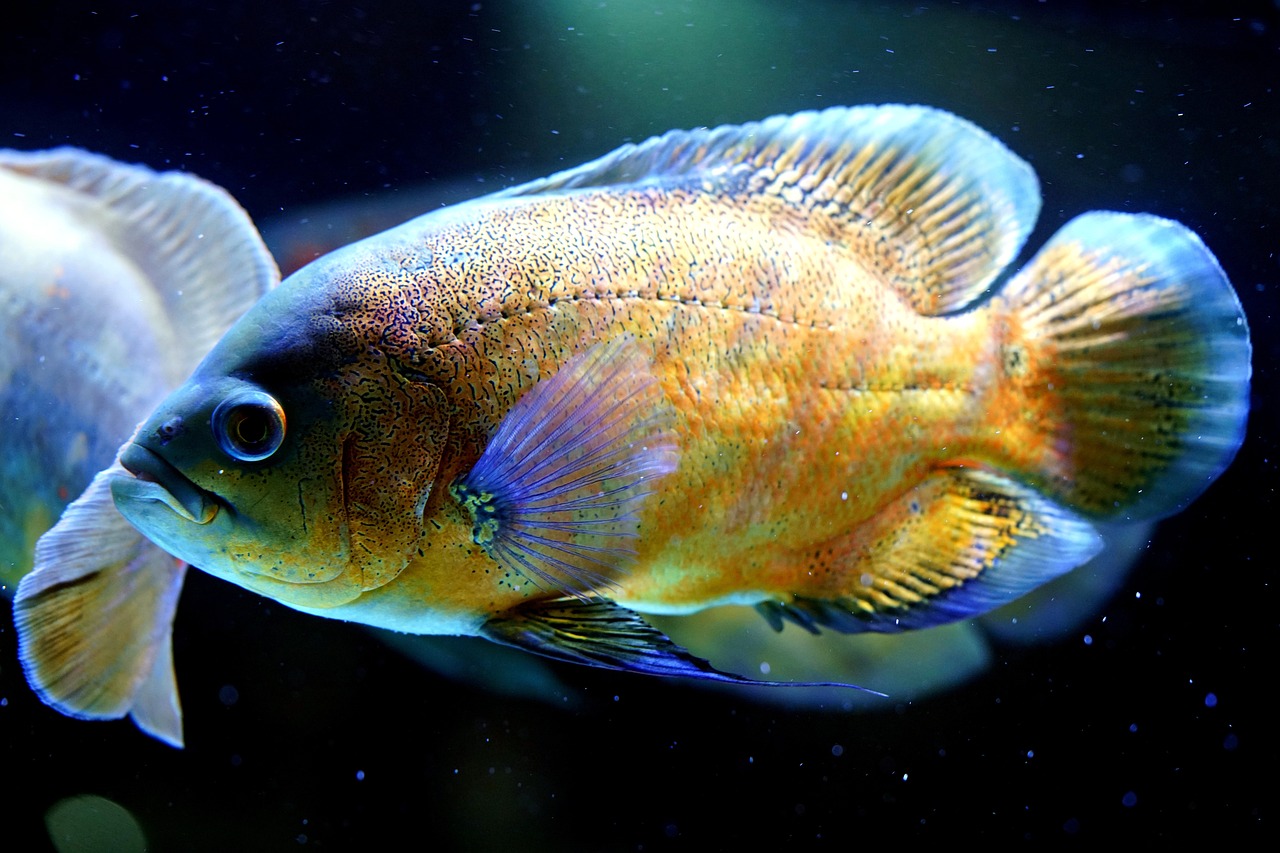The Oscar fish, scientifically known as Astronotus ocellatus, is a fascinating and popular species among aquarium enthusiasts. Known for their vibrant colors, impressive size, and captivating personalities, Oscars have gained a significant following in the fishkeeping community. In this article, we will dive into the world of Oscar fish, exploring their characteristics, care requirements, and why they continue to be a favorite among fish keepers.
Overview of Oscars:
Originating from the Amazon River basin in South America, Oscars are large and majestic cichlids. They are renowned for their striking appearance, featuring a solid, oval-shaped body adorned with bold patterns and vibrant hues. Oscars come in various color variations, including red, albino, tiger, and even black, making them an eye-catching centerpiece in any aquarium.
Size and Lifespan:
One of the defining features of Oscars is their impressive size. In the wild, they can grow up to 16 inches (40 cm) or even larger. In aquariums, they typically reach sizes between 10 to 12 inches (25-30 cm), but with proper care and a spacious tank, some individuals can exceed these dimensions. Oscars are known for their longevity, with an average lifespan of 10 to 15 years, provided they receive adequate care and a suitable environment.
Tank Requirements:
Due to their size and territorial nature, Oscars require a spacious aquarium to thrive. A tank size of at least 75 gallons is recommended for a single Oscar, with larger tanks being even more suitable. A larger tank not only allows the fish to grow properly but also provides ample swimming space and reduces aggression towards tankmates.
Filtration and Water Parameters: Oscars are sensitive to poor water quality, so a robust filtration system is essential to maintain excellent water conditions. They prefer slightly acidic to neutral water with a pH range of 6.5 to 7.5. The temperature should be kept between 74-80°F (23-27°C) to mimic their natural habitat.
Decor and Substrate: Oscars appreciate a well-decorated tank with plenty of hiding spots. Provide them with sturdy rocks, driftwood, and caves to create hiding places and territories. A sandy substrate or smooth gravel is ideal, as Oscars tend to sift through the substrate in search of food.
Tank Mates: While Oscars are generally peaceful, they can become territorial and aggressive towards smaller or more docile tankmates. It’s recommended to keep Oscars with other large, robust fish of similar size and temperament. Some suitable tankmates include other large cichlids like Jack Dempseys or Silver Dollars. Avoid keeping Oscars with small, delicate fish that may become targets for aggression.
Feeding:
Oscars are opportunistic predators in the wild, and their feeding behavior is equally impressive in captivity. They are omnivorous, and their diet should consist of a variety of high-quality foods:
Prepared Foods: Offer a staple diet of high-quality pellet or flake foods specifically formulated for cichlids. Look for options that contain a balanced mix of proteins, vitamins, and minerals to support their growth and overall health.
Live and Frozen Foods: Supplement their diet with occasional live or frozen foods, such as earthworms, crickets, shrimp, and small fish. These foods provide essential nutrients and mimic their natural feeding habits.
Vegetable Matter: Oscars also appreciate some vegetable matter in their diet. You can offer blanched peas, spinach, or other leafy greens to provide dietary fiber and promote digestive health.
Behavior and Personality:
Oscars are known for their fascinating personalities and distinct behaviors. They are intelligent and can recognize their owners, often showing excitement during feeding times and interacting with their caretakers. Oscars are also highly territorial and may display aggressive behaviors, especially during breeding or when establishing dominance. It’s essential to provide them with adequate space and appropriate tankmates to prevent excessive aggression.
Breeding:
Breeding Oscars in captivity can be a rewarding experience for dedicated fish keepers. However, it requires specific conditions and careful preparation:
Pairing: To initiate breeding, it’s crucial to pair a compatible male and female Oscar. This can be achieved by introducing several young Oscars into a spacious tank and allowing them to form pairs naturally.
Breeding Tank Setup: Prepare a separate breeding tank with appropriate decorations, such as flat rocks or clay pots, for the female to lay eggs on. Maintain optimal water conditions and provide ample hiding spots for the female and fry.
Spawning Behavior: During the breeding process, the male will clean and defend the chosen spawning site, while the female will lay eggs. The male will then fertilize the eggs, and both parents will guard the nest and care for the fry until they are free-swimming.

